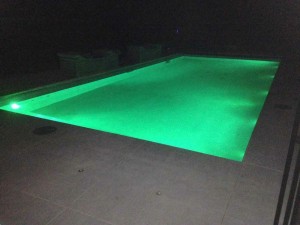As a pool owner, there are five chemical levels that you should always keep track of. These levels include the following:
1. Cyanuric Acid( C.Y.A)- It protects the chlorine from direct sunlight and regulates the FC level.( indoors 0 to 20, SWG 70 to 80, outdoors 30 to 50)
2. Calcium Hardness (C.H.) – Extremely high levels can lead to calcium scaling. (220-350, vinyl lower)
3. Total Alkalinity (T.A.) – Proper levels aid in keep the pH in balance. Extremely high levels can make the pH rise. (60-120, at times even higher)
4. Alkalinity/Acidity (pH) – Must be kept in balance to avert irritation and safeguard the equipment of the pool. (7.5-7.8)
5. Free Chlorine (F.C) – A decontaminator that keeps the pool water safe and free from bacteria. Chlorine must be regularly checked for proper levels. (levels will depend entirely on CYA)
Other Chemical Levels That You Need To Know
• Borate – This an optional enhancement.
• Combined Chlorine (CC) – When CC indicates over 0.5, there is a problem.
• Salt – It is needed with Salt Water Chlorine Generator (S.W.G.), otherwise it just a discretionary enhancement.
We shall now examine all the 9 chemical levels in detail and their different roles in the pool.
1. Free Chlorine
Maintaining the right FC level is very important when keeping your water in balance. Do not allow the FC to get too low as it will increase the chances of algae growth. FC shows the level of sanitizing chlorine available to keep the pool hygienic. Free Chlorine should be verified, and added on a regular basis. In case you have an automatic feeder, make sure that you run tests after a couple of days.
Free Chlorine can be consumed by direct sunlight through the breakdown of organic material in the pool. The level of Free Chlorine that you will need to uphold will depend mostly on your CYA level and how regularly the pool is used. The most recommended methods of raising the level of Free Chlorine is through the use of liquid chlorine.
2. Combined Chlorine
This is an intermediary break-down product which is created in the process of disinfecting the pool. It brings the ‘chlorine’ odor that many individuals associate with chlorine pools. Combined chlorine shows that there is something in the pool that the free chlorine is in the course of breaking down. If it is an outdoor pool, the CC will usually stay at or next to zero as long you uphold the right Free Chlorine level and the pool receives some direct sunlight.
3. Alkalinity/Acidity
pH shows how basic or acidic the water is. The owner of the pool must carry out pH tests daily. A pH level of 7.5 to 8.0 is ideal. However, those pH below 7.2 tend to make the eyes burn or sting. pH that falls below 6.8 can cause severe damage to metal parts, especially the pool heaters with copper heat exchange coils. Additionally, higher pH can cause calcium scaling.
To lower pH, you can use either dry acid or muriatic acid. If you want to raise pH, you can use soda ash or borax.
4. Total Alkalinity
This shows the ability of water to buffer changes in pH. Buffering means that you will need to use a greater quantity of a chemical to alter the pH. At low Total Alkalinity levels, the pH will tend to fluctuate around violently. At high Total Alkalinity levels, the pH will tend to drift up. If you want to increase TA levels, you can use baking soda.
5. Calcium Hardness
To increase the level of calcium hardness, you can add calcium chloride which is often sold by many pool stores. You can also use calcium hydroxide. If you want to lower the CH level, you will have to replace the water.
6. Cyanuric Acid
It is often referred to as the conditioner or stabilizer. It protects Free Chlorine from sunlight and lowers the actual strength of the Free Chlorine. It achieves this by holding some of the FC in reserve. It is imperative to understand that the CYA level so that you can know the FC level that you should aim for.
To increase the level of CYA, you can add Cyanuric acid that is often sold as a conditioner or stabilizer. The acid is available in both liquid and solid form. If you want to reduce the level of CYA, you must replace the water in the pool.
7. Salt
Salt is needed with a SWG. It can also be added to water so at to enhance the personal feel of the water. For a SWG, the salt level will be naturally around 3,000 but various models vary. For better water feel without SWG, you should try levels of around 2,000.

